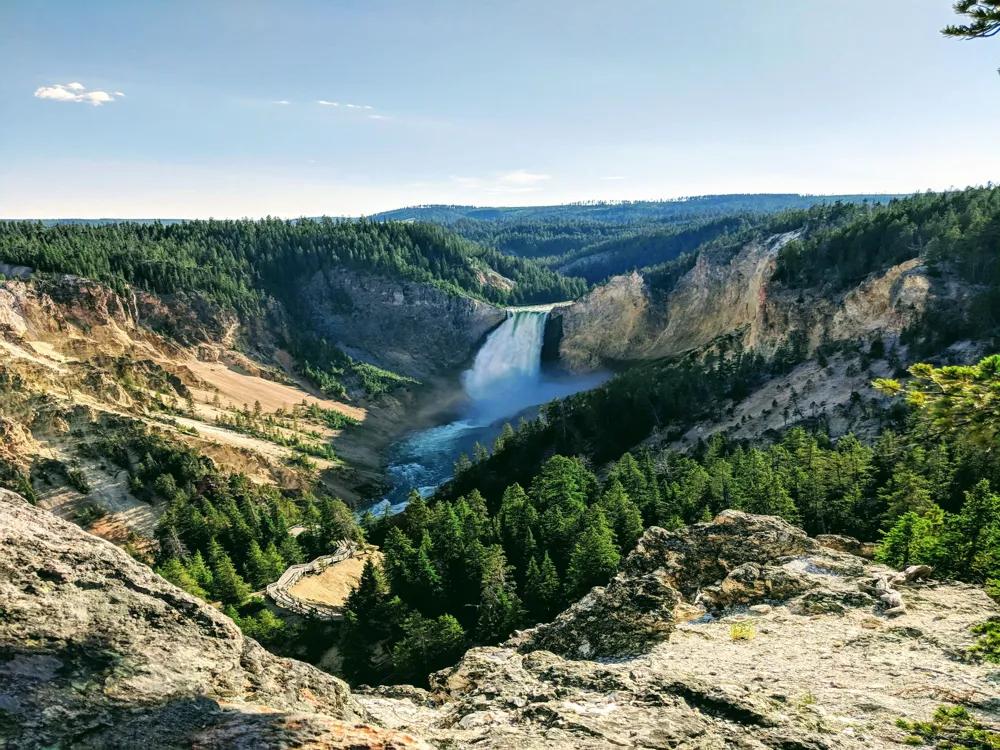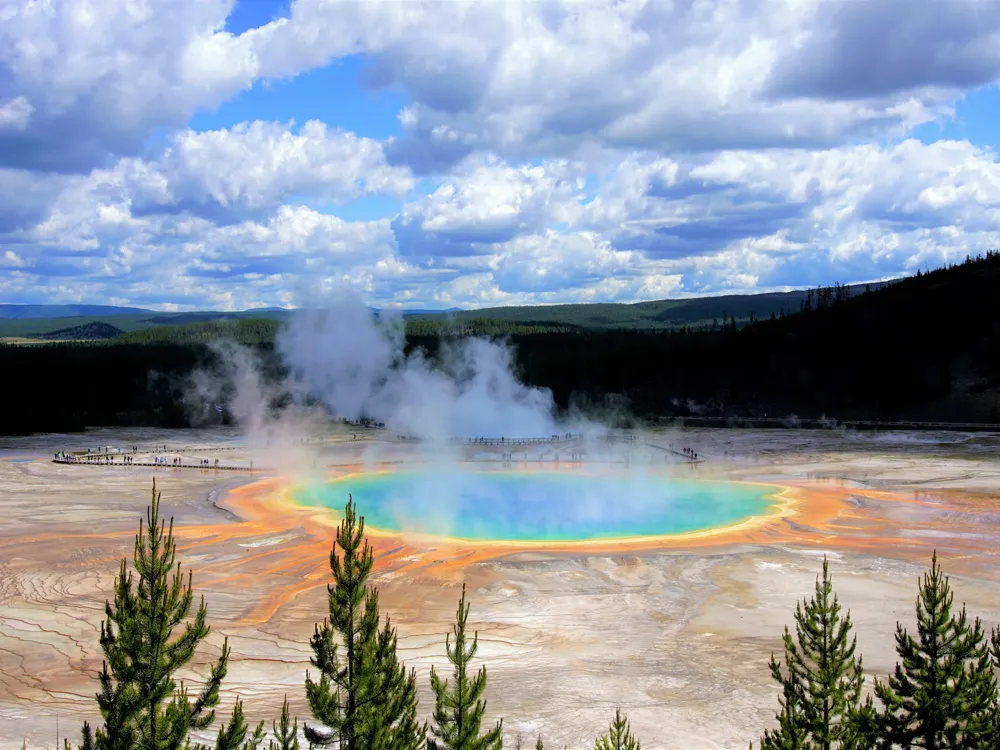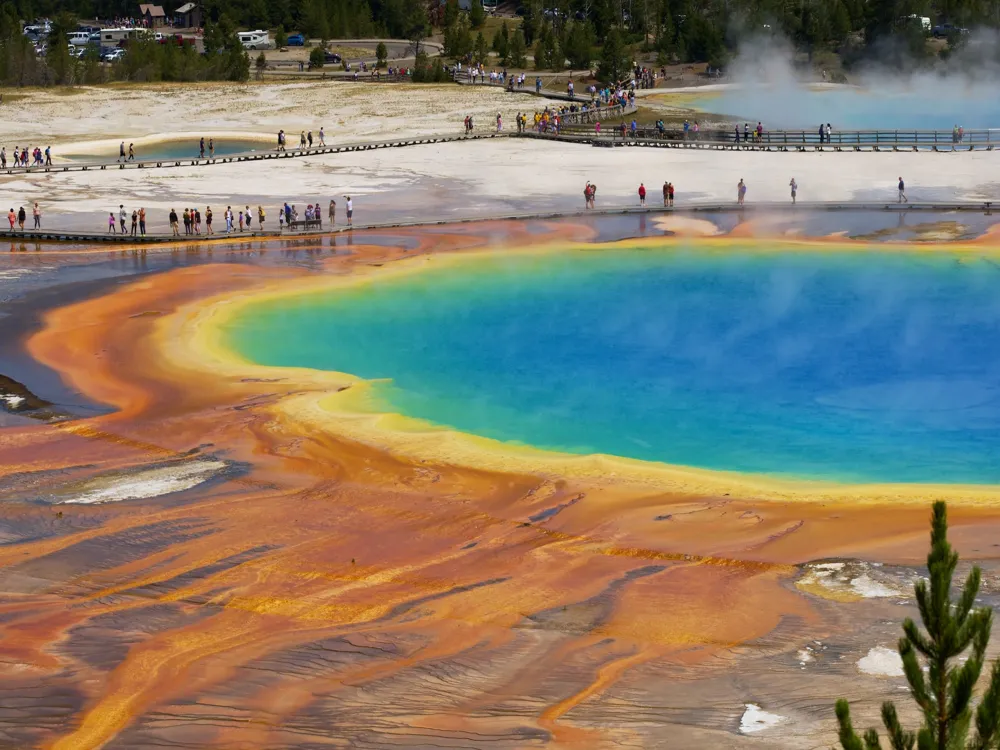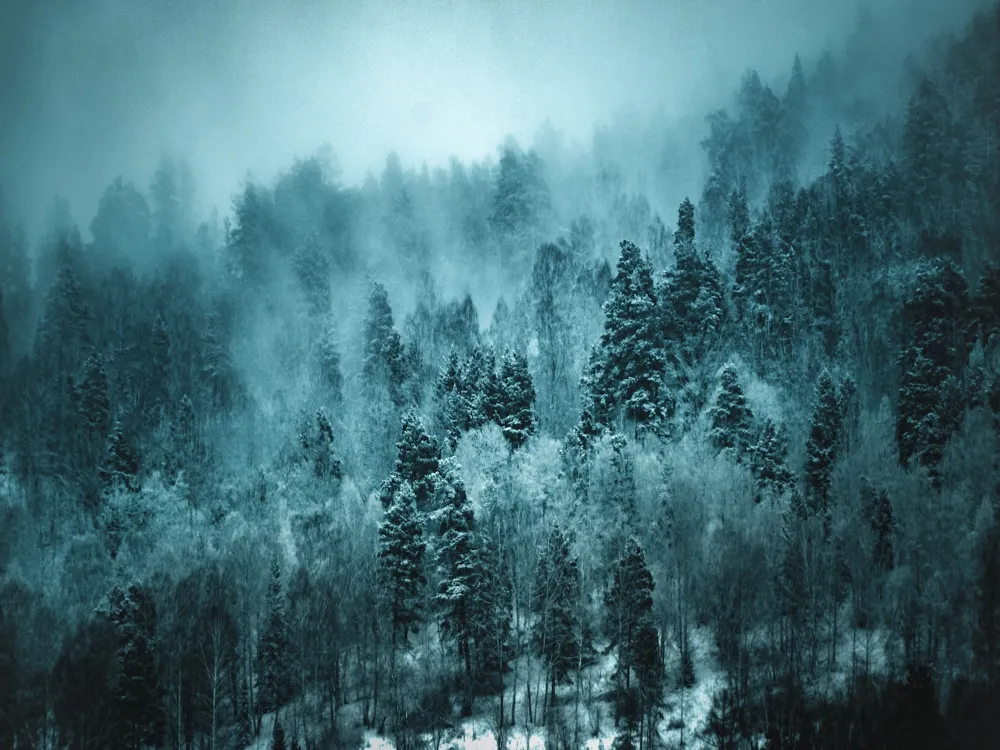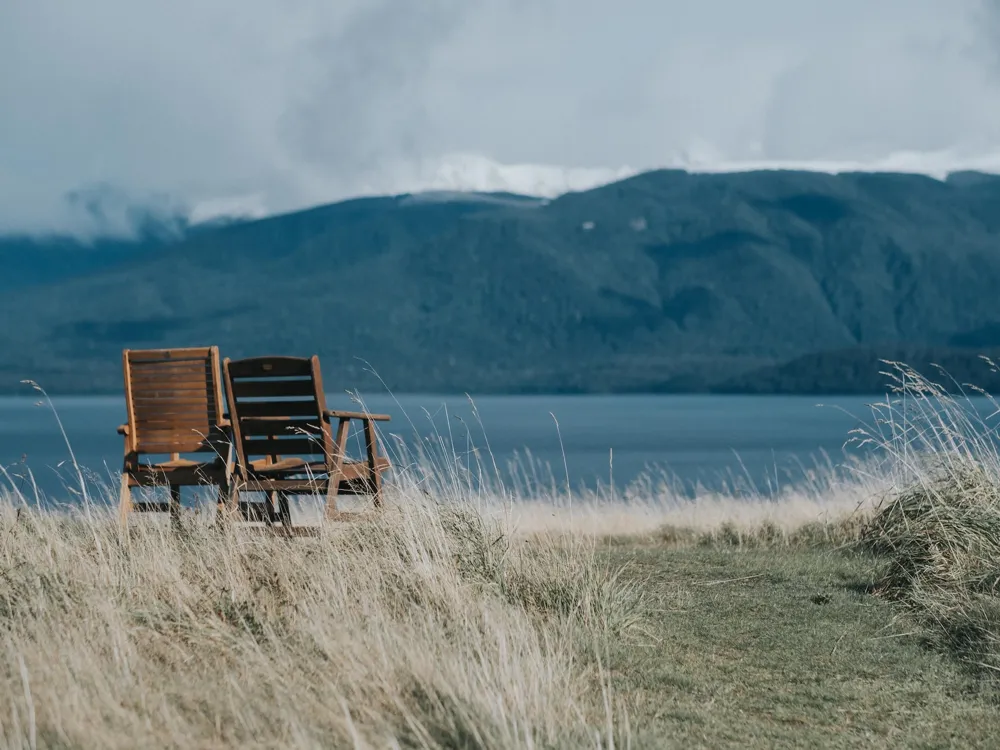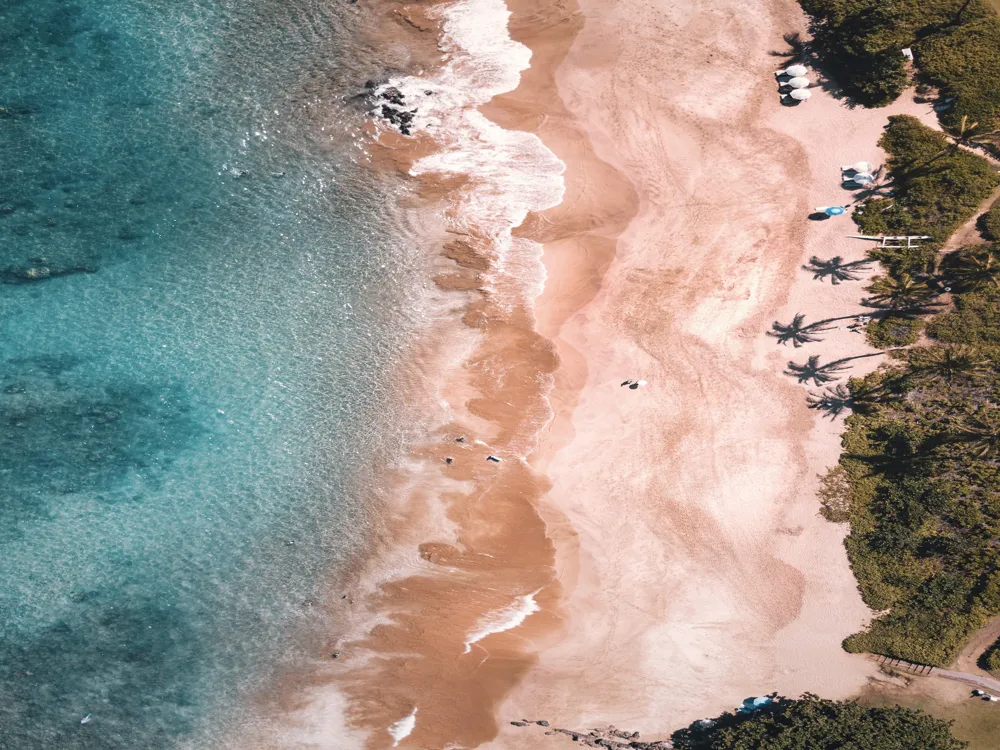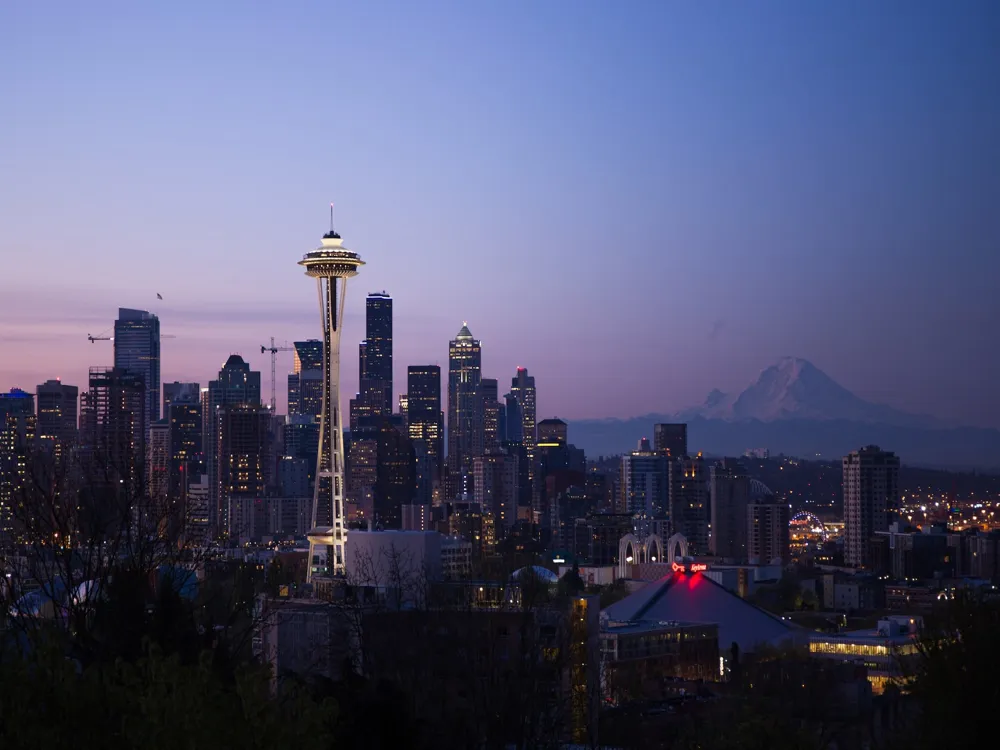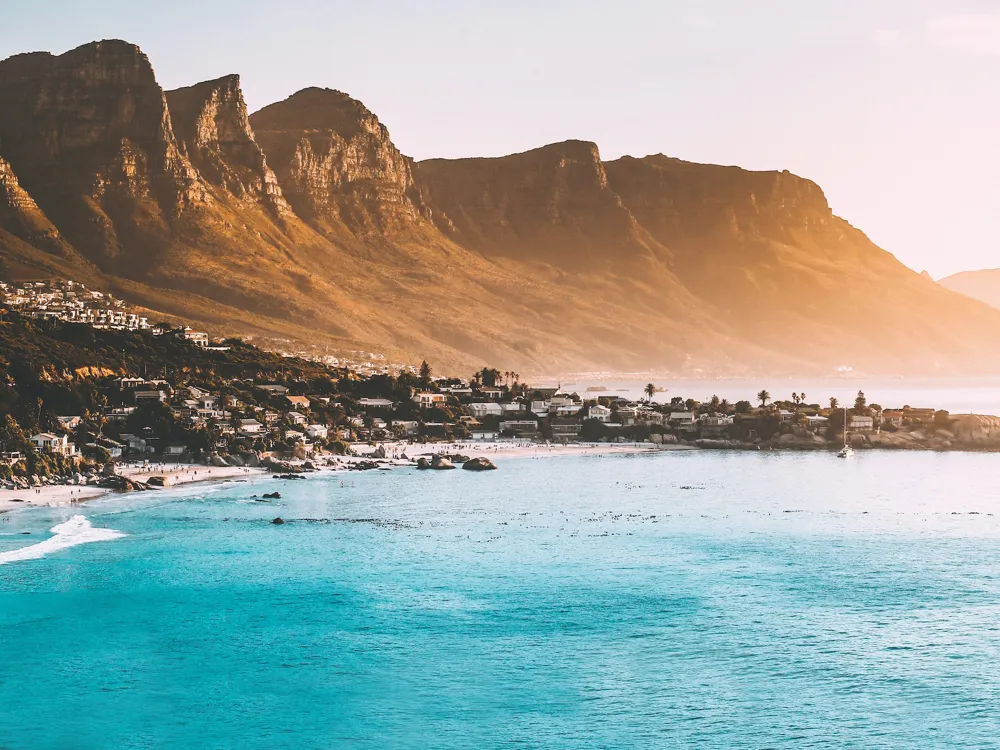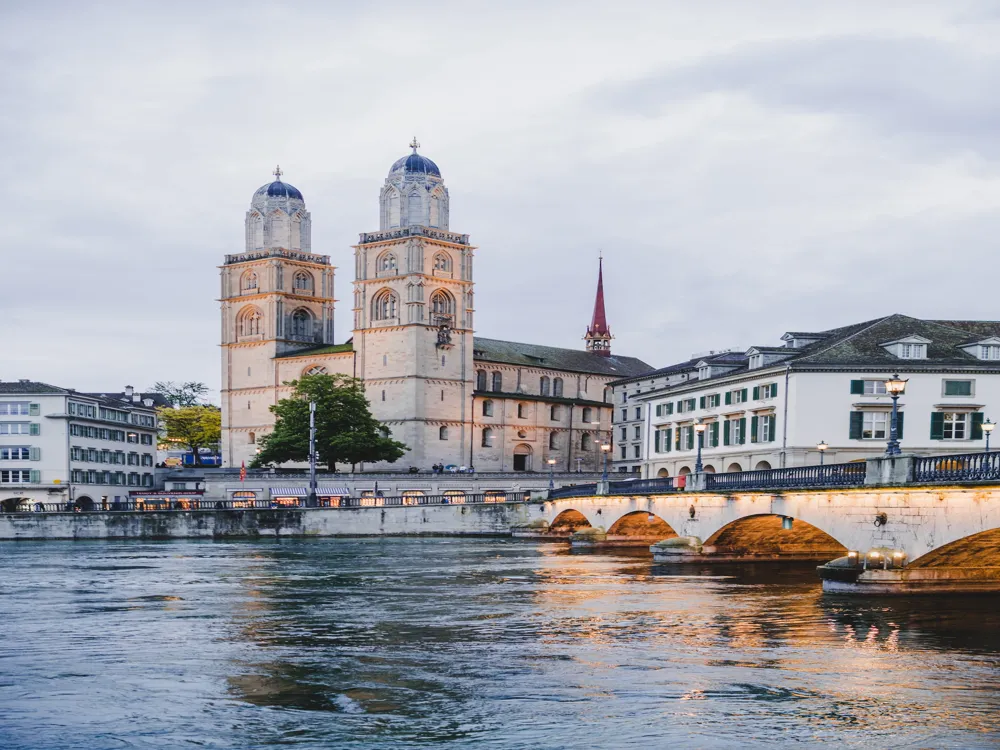Plan Your Travel To Yellowstone National Park
Places To Visit In Yellowstone National Park
Artist Point

This breathtakingly scenic point on the south rim of the Grand Canyon is a view you just cannot miss!
For the most perfect vacation picture, there is no better place than artist point. The waterfall in the centre crashing down, surrounded by canyons of pink and yellow and dotted with trees, the scenery couldn't get any better!
The Artist Point was named so based on a mistake, actually. This splendid view was thought to be the point where Thomas Moran created his many paintings when Frank Haynes was photographing the area. It was later revealed that it was actually the north rim where he painted, but the name was already too popular, and it's already so beautiful, nobody really minded calling it Artist Point!
Read More
Grand Canyon of the Yellowstone
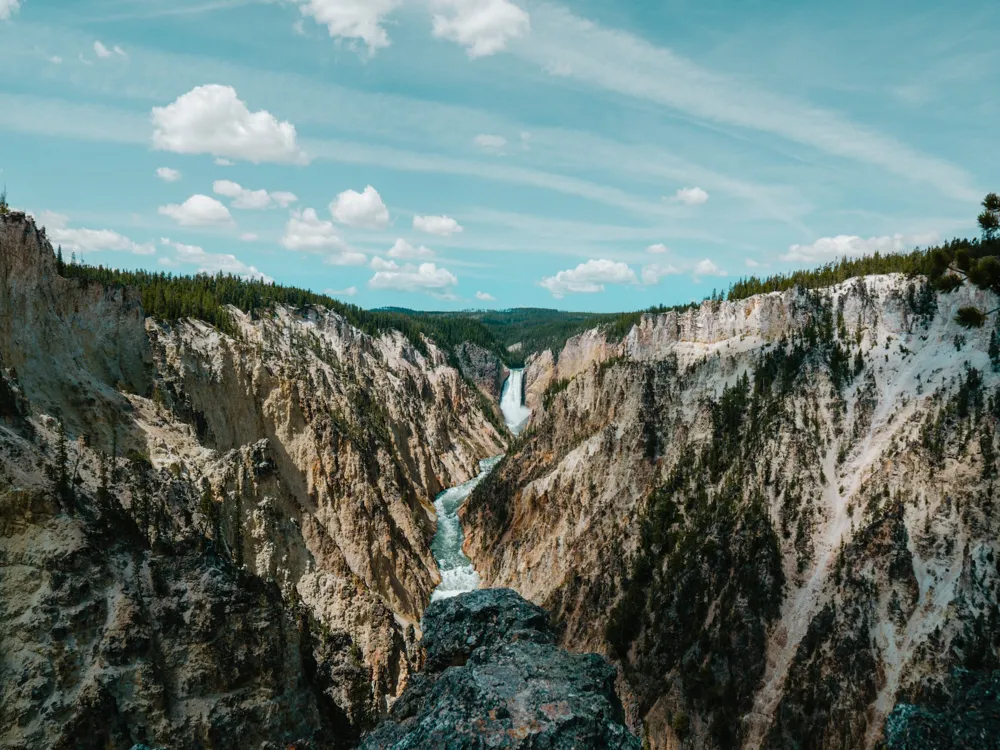
Yellowstone's Grand Canyon is one of the most iconic sites in the region, providing several stunning vistas as you go along.
This almost 40 km long canyon is a large and the most famous canyon in Yellowstone. It is hugely popular among visitors due to it's scenic views of the Lower and Upper falls, as well as the fascinating pink and yellow coloured rocks. There are several view points and points of interest along the length of the canyon.
The canyon's beautiful shades of colours are an iconic part of Yellowstone. The mineral stains due to the activities of water have given the rocks of the canyon such a pleasant tint of colours, it is truly a sight to behold.
The geology of the canyon is not completely clear. It was created due to erosion over hundreds of thousands of years, and the geothermal nature of the area is still prevalent, which can be seen by the hot springs throughout the canyon.
Read More
Grand Prismatic Spring
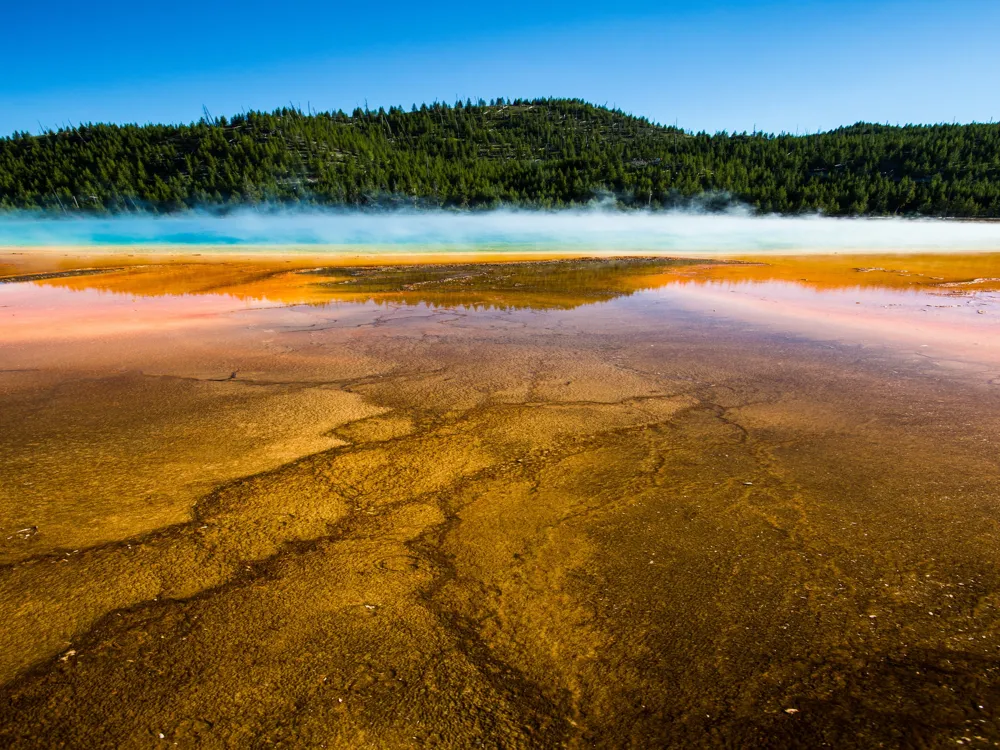
The largest hot spring of the US, 3rd largest of the world, and one of the most enticing hot springs you will ever lay your eyes upon!
The moment you view the Grand Prismatic Spring, you will understand why it has been named so. The hot spring is a spectacular representation of rainbow colours, like white light passing through a prism, with red, orange, green, yellow and the bluest blue you'll ever see. The spring gets its distinct colours from the Achaea in the microbial mats around the water. The minerals and the temperature of the water create ideal conditions for the Achaea to grow, their colours ranging from green to red, depeing on the ratio between chlorophyll and cartenoid. The centre of the spring is a soothing blue colour, and due to extreme temperatures is 100% clean and sterile.
Read More
Mammoth Hot Springs
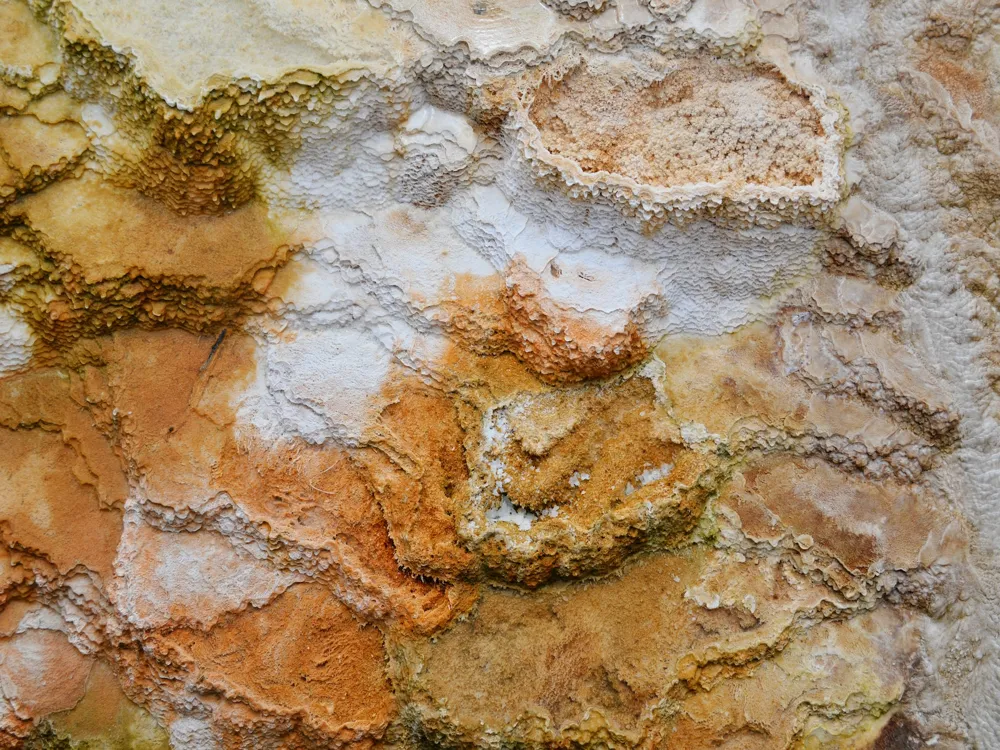
Adjacent to Fort Yellowstone, the Mammoth Hot Springs is a huge complex dotted with numerous large hot springs.
Another stunning location in the Yellowstone National Park, the Mammoth Hot Springs adorned with hundreds of springs and terraces that have formed over thousands of years. The source of water of these hot springs is actually the Norris Geyser Basin, connected via an underground fault line. Over here you will find several travertine terraces, most of them on the Terrace Mountain - the largest carbonate depositing spring in the world. Take a walk along the boardwalk which will take you across these steaming features, and popular terraces like the Minerva Terrace and the Orange Spring Mound among several others.
The Fort Yellowstone located right next to the Mammoth Hot Springs is another interesting place. This historic US Army fort was built when to bring order to Yellowstone and preserve it's unique nature, the army had to be requested to step in and take charge of the park. A tour of the fort is must, taking you through the developments over the decades at the national park. Other attractions of the area include the Albright Visitors Center, the Research Center and the Old Gardiner Road. The iconic Roosevelt Archway is also located on the entry side of the Mammoth Hot Springs.
Read More
Midway Geyser Basin
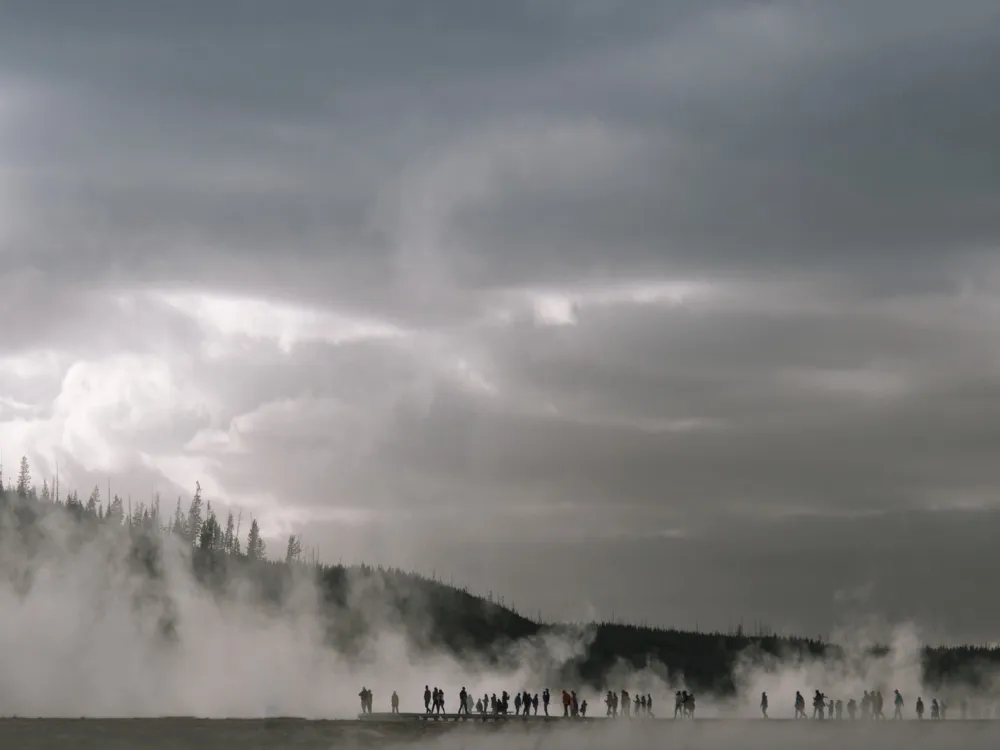
The Midway Geyser Basin is home to stunning hot springs, including the Grand Prismatic Spring and the massive Excelsior Geyser.
The geyser is located just above the Lower Geyser Basin, and has a collection of some huge and stunning hot springs. The main attraction in this area is obviously the captivating Grand Prismatic Spring, with it's rainbow coloured surface and the water a shade of the most amazing blue you've seen. The Excelsior Geyser, also located here, used to be the largest geyser in the world. It is today dormant, and has one of the biggest hot springs of the area. It is believed that it's eruptions were so violent, they over time cracked the siliceous sinter lining, causing gas leak and hence leading to loss of thermal energy. Nevertheless, the active hot spring today is almost always covered by a thick layer of steam.
The richly coloured Turquoise and Indigo hot spring are also noteworthy. Both of them are named on their colour, and aptly so.
Read More
Norris Geyser Basin
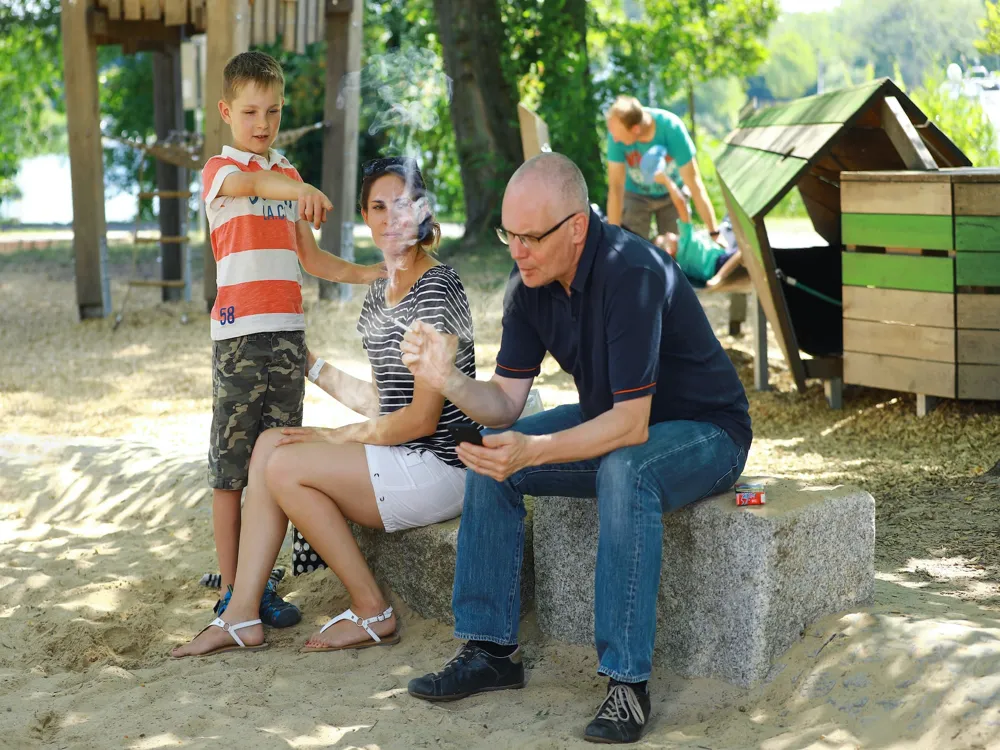
Located in the northwest edge of the caldera, it is the hottest geyser basin in Yellowstone, and home to the famous Steamboat Geyser.
The Norris Geyser Basin is huge and separated into three areas - Porcelain Basin, Back Basin and One Hundred Springs Plain. These areas are dotted with several geysers and colourful hot springs characteristic to the park.
The Norris basin is largely barren due to the acidic nature of the surface, and due to this the water in the geysers and springs is acidic as well. With the Roaring Mountain in the backdrop, with it's several scalding fumaroles and steam vents, the Norris Geyser Basin has tons of geysers worth a look, but none more so than the Steamboat Geyser. It is the largest geyser in the world, erupting up to heights of nearly 90 metres! It has small eruptions periodically, and major eruptions once in about a year.
The Norris Basin is highly dynamic, and is prone to unusual activities and disturbances. There is a noticeable change in eruptive patterns, colours and acidity, temperature of the water throughout the basin. The Porkchoop Geyser in particular, has been known to produce anomalies. Many part of the Norris Geyser have been closed due to it's dangerous nature.
Read More
Upper Geyser Basin

Perhaps the most famous geyser basin in the Yellowstone, and the highest concentration of geothermal features in the park.
Of the Yellowstone's several geyser basins, the Upper Geyser Basin's collection of geysers is among the best. The famous Old Faithful geyser is located here, which erupts every 30 - 120 minutes, and is considered to be one of the most predictable geothermal features on the planet. It shoots scalding water up to 30 metres in the air. The basin also has 4 other large predictable geysers, namely the Grand Geyser, Castle Geyser, Daisy Geyser and Riverside Geyser.
Along with the famous geysers, you will find several stunning hot springs like the Blue Star spring near the Old Faithful and also numerous other geothermal features. The Upper Geyser Basin is located south of Norris Geyser Basin, along the caldera.
Read More
Yellowstone Lake
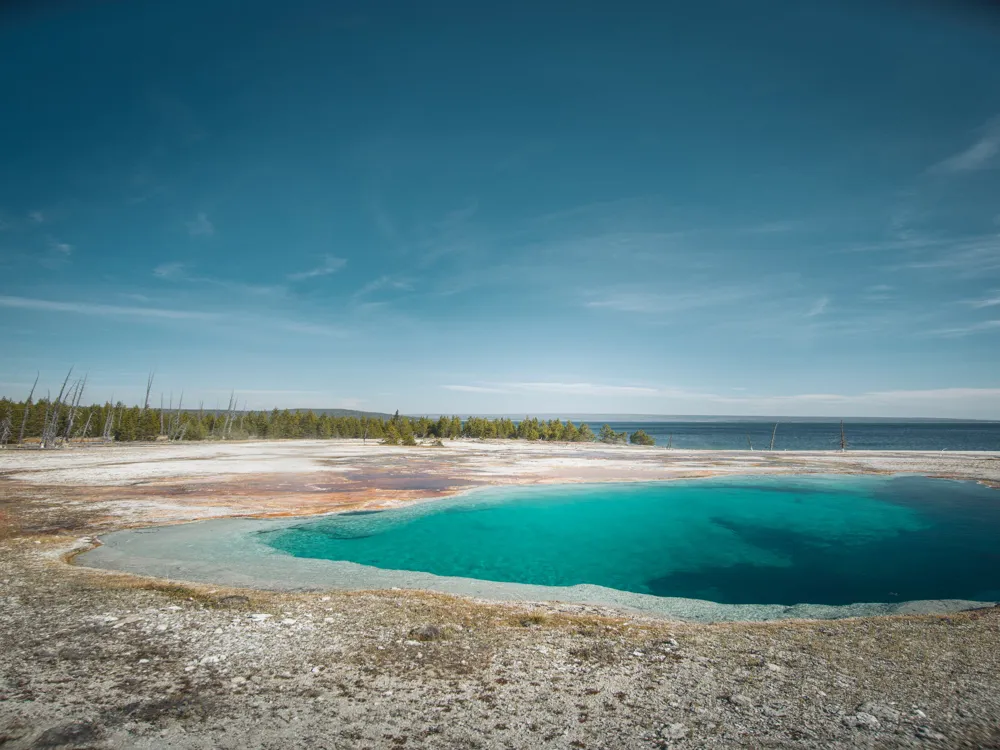
The origin point of the Yellowstone river and the largest water body in the Yellowstone National Park, the lake is a splendid and serene location with some fantastic views of the landscape.
The Yellowstone Park's natural beauty is almost epitomised here at the Yellowstone Lake. It's pristine waters are an amazing feature of the landscape, and the scenery is just breathtaking. The lake remains frozen throughout the winters, with ice as thick as a metre, except for some shallow areas which are dotted with geothermal activity.
Angling is a popular activity on the lake, and the huge populations of cutthroat trout in the lake make it an ideal place for angling. Taking a ferry across the lake is perhaps the best way to enjoy the panoramic views and the cool breezes. Don't think of jumping into the water for a swim though! The temperatures are extremely cold throughout the year, and towards the winters are cold enough to limit survival time to barely 20 minutes.
Read More
Yellowstone Waterfalls
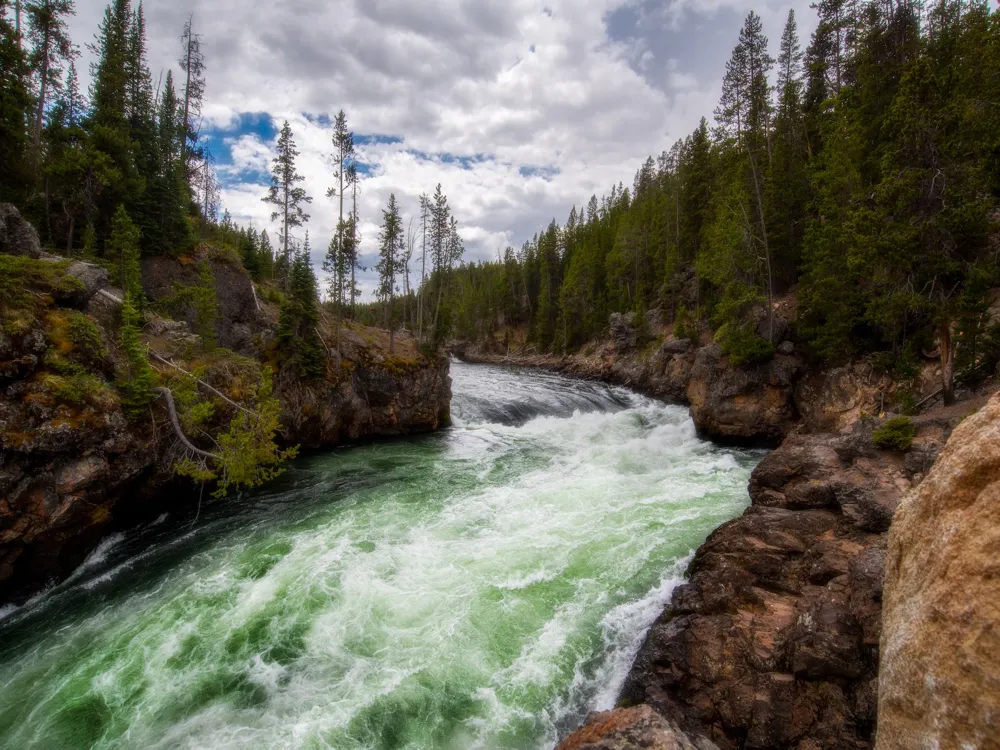
The Yellowstone river has two waterfalls, the Upper and the Lower, and they both are places of utmost scenic beauty.
The Yellowstone river which starts from the Yellowstone lake, falls first at the Upper Yellowstone Falls and then into the Grand Canyon of Yellowstone after the Lower Yellowstone Falls. Of the two falls, the Lower waterfall is much more scenic and popular among tourists, since it falls from a much greater height (94 metres as compared to the Upper waterfall's 33 metres), making for a much grander scenery. The Lower falls are actually the largest falls in the Rocky Mountains.
You can view the falls from several vantage points, a few trails leading down to the foot of the falls, and some points can be accessed via the Grand Loop road.
Read More
Yellowstone National Park Travel Packages
View All Travel Packages Yellowstone National Park
Nearby Places Yellowstone National Park
Browse Package Collections
Browse Hotel Collections










